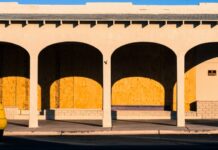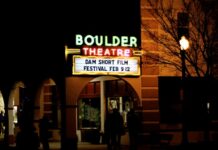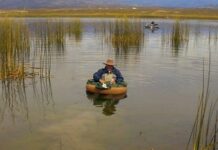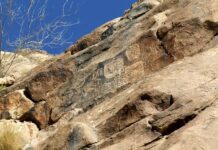Bullock’s Field, the old Boulder City Airport
Prior to 1933, Boulder City’s “airport” was a graded dirt strip that accommodated the occasional private plane. In 1933, Noel Bullock leased the land from the Bureau of Reclamation to create Bullock’s Airport. Noel, a Nebraska farm boy, already had found fame driving his homemade RAJO Model T Ford Special, Old Liz, that the press called a tin can and that Noel renamed Tin Lizzie. Noel and “Tin LIzzie”went on to win the 1922 Pike’s Peak Hill Climb Championship, and an icon was born. Not content to be just a dirt track racer with 150 victories going around in a circle, he saw a great future in aviation. He bought a Curtis Jenny biplane and learned to fly.
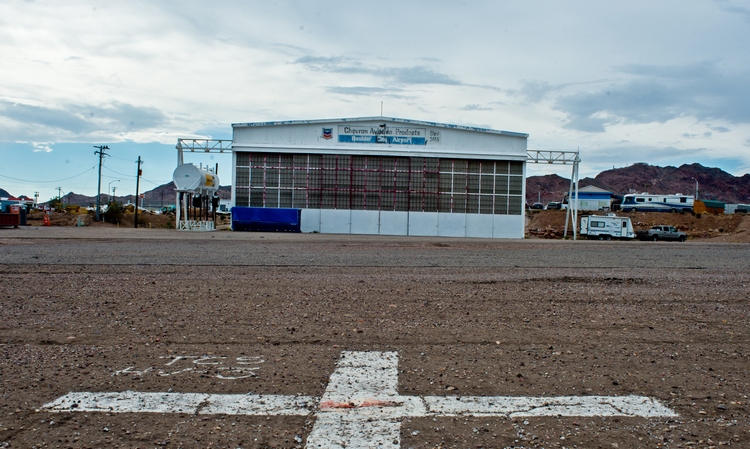
Bullock would fly you over the then Boulder Dam for $2.50, the Grand Canyon for fifteen bucks or to LA for twenty bucks. Charter trips: anytime, anywhere. He died a year later while crash landing his plane in the Sea of Cortez, killing him and his six passengers. He didn’t renew his lease.
Shortly thereafter, Glover E. “Roxy” Ruckstell, another ex-race car driver, who made his fortune with his invention the Ruckstell Axle for the Ford Model T, formed Canyon Airline which took over Bulluck’s lease. Catering to the influx of tourists who came to be inspired by the dam, Ruckstell also bought the Boulder Dam Hotel, took over all the tour business at the Lake Mead Recreation Area and built the Lake Mead Lodge.
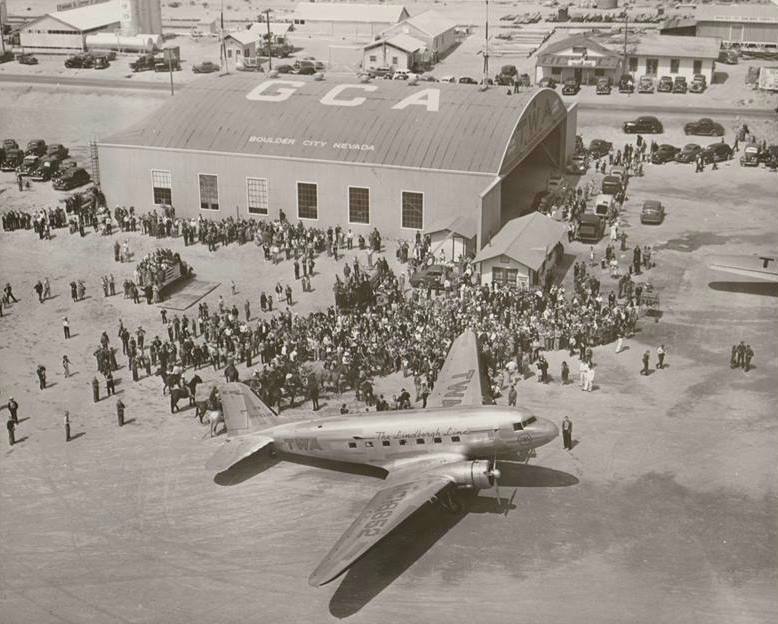
Grand Canyon Airline made a deal with TWA to handle their flights and lucrative mail route and to build a terminal for them. Howard Hughes hung out because, you know, he was the owner of TWA. Hughes took off from Bullocks Field on the ill fated test flight of his Sikorsky S-43. He crashed into Lake Mead, killing two men and giving himself a concussion and other brain injuries that would change him forever. He then convalesced at the Boulder Dam Hotel, owned by our old friend Roxy. Roxy’s cook at Grand Canyon Airlines was the first black man to be allowed to work in Boulder City, despite the objections of the dictatorial Boulder City City Manager, Sims Ely, who left his mark on various idiosyncrasies of the town.
With the construction of the new airport terminal, the old terminal was moved to a site on Avenue I, where the black cook moved in over the vehement but ultimately ignored objections of Sims Ely. The ticket office, later converted to a residential home, has since been hauled to the the County Museum down the road on Boulder Way and is in the process of being restored to it’s original form.
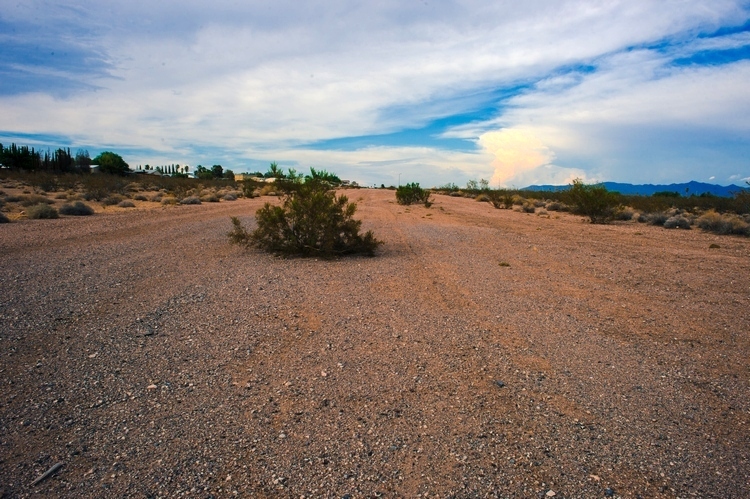
Elks Lodge BPOE 1682 bought the the old terminal building in 1958 and, in a heroic act of historic preservation, transformed it into their clubhouse. The Elk’s terminal building also became the home of the oldest continually running Boy Scout troop in Nevada, Troop 7.
The Killers filmed a music video for Spaceman on the old, and some say haunted, runway. I know for a fact this is the only thing that my kids, who all grew up in Boulder City, know about the old airport.
Members of the community are now in the process of blessing it as a site of historical significance.
— Alan Goya
Color photos by GOYAphotography



